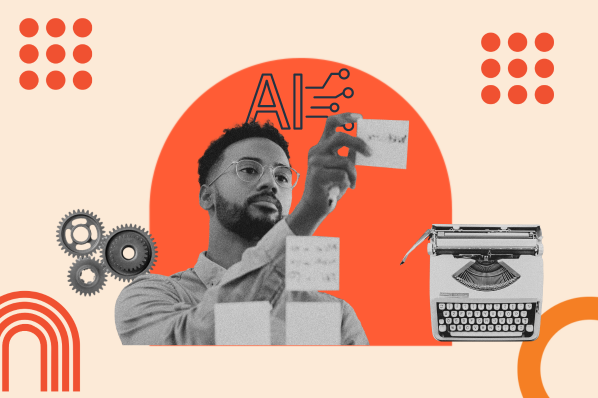This definitive guide deciphers the landscape for you, ranking the top 9 programming languages you can‘t afford to ignore in 2023. Each language comes with its unique strengths, ideal use-cases, and community support, which we will demystify for you. Whether you’re a beginner just starting or a seasoned pro looking to stay updated, this listicle has you covered.
So, let's dive in and unlock the future of AI development!
1. Python
What We Like:
-
Extensive adoption within the AI and data science communities.
-
A rich ecosystem of libraries and frameworks, such as TensorFlow, PyTorch, and scikit-learn, to speed up development.
-
Intuitive syntax and readability, making it easier to focus on the logic of AI algorithms.
Best for:
-
Natural Language Processing (NLP)
-
Deep Learning projects
-
Data Analytics and Visualization
Pro Tip:
When you‘re building deep learning models, Python’s extensive library support allows you to switch between libraries effortlessly. This is especially useful when you need to compare performances or features.
Example:
Python’s flexibility, rich ecosystem, and strong community support make it the undisputed leader for AI programming as of 2023. Whether you're developing neural networks, decision trees, or natural language processors, Python offers a robust platform to build on.
2. R
What We Like:
- Exceptionally strong in statistical analysis and data visualization.
- Growing AI support with packages like xgboost, randomForest, and caret.
- Designed for data manipulation, making it easier to clean and analyze large datasets.
Best for:
- Statistical Models
- Data Visualization
- Exploratory Data Analysis
Pro Tip:
For AI projects that require heavy statistical analysis or data visualization, R should be your go-to language. It’s particularly useful for pre-processing tasks and exploratory data analysis, which can be critical steps in AI applications.
Example:
R excels when it comes to statistics and data analysis, making it an excellent choice for specific types of AI applications. Whether you're looking to develop statistical models or visualize intricate data patterns, R provides a powerful suite of tools to help you succeed.
3. Java
What We Like:
- Highly portable, allowing your AI applications to run on any device that supports a Java Virtual Machine (JVM).
- Strong community support and a plethora of libraries for machine learning and data science, such as WEKA and Deeplearning4j.
- Excellent for large-scale, enterprise-level applications due to its robustness and scalability.
Best for:
- Big Data Analytics
- Enterprise-level Applications
- Real-time Applications and Systems
Pro Tip:
If you're developing AI applications that require real-time processing and high performance, Java is an excellent choice. Its speed and portability can be major assets.
Example:
Java’s portability and scalability make it a strong choice for enterprise-level, real-time, and large-scale AI applications. If you're already invested in the Java ecosystem or aiming for an application that needs to be incredibly robust and portable, Java offers compelling benefits in the AI space.
4. C++
What We Like:
-
Unmatched in terms of speed and performance, allowing for real-time processing.
-
Direct access to computer memory, providing a high level of control for optimization.
-
Robust libraries like Shark and Dlib for machine learning and computer vision tasks.
Best for:
-
Performance-Critical Applications
-
Real-Time Systems
-
Embedded Systems
Pro Tip:
If you require extremely fast computations, C++ should be your go-to. It's especially useful for AI projects where the computational time is a bottleneck, such as real-time simulations or high-frequency trading algorithms.
Example:
When you need raw performance and the ability to interact closely with hardware, C++ stands as one of the most powerful languages for AI development. It‘s not as beginner-friendly as Python or R, but if you’re developing a real-time or performance-critical AI application, C++ offers capabilities that are tough to match.
5. Lisp
What We Like:
- One of the oldest programming languages, developed specifically for artificial intelligence.
- Exceptional support for symbolic reasoning and strong support for iterative design.
- Highly customizable with the ability to create domain-specific languages within it.
Best for:
- Research in Artificial Intelligence
- Symbolic Reasoning
- Expert Systems
Pro Tip:
Lisp allows for a high level of abstraction and is ideal for projects where complex algorithms and symbolic reasoning are involved. Its long history in AI research makes it a treasure trove of algorithms and approaches.
Example:
Lisp (List Processing) was originally created specifically for AI development and has a rich history of being used in AI research. Although it's less popular in the current job market compared to languages like Python or Java, Lisp offers unique capabilities for complex problem-solving tasks in AI, especially in the research domain.
6. Prolog
What We Like:
- Exceptional for logic-based reasoning and building expert systems.
- Simplifies tasks like pattern matching, tree-based data structuring, and automatic backtracking.
- Tailored for natural language processing and semantic reasoning tasks.
Best for:
- Expert Systems
- Logic Programming
- Semantic Web Applications
Pro Tip:
If your AI project is based on rules, logic, or semantics, Prolog offers a level of ease and sophistication that‘s hard to find in other languages. It’s particularly useful for solving problems in a more human-like way, using logic rather than brute-force calculations.
Example:
Prolog (Programming in Logic) is unique in that it allows you to express logic in a very human-readable way. This feature makes it particularly useful for building AI applications where logic and rule-based reasoning are required. Although it might not be the first language that comes to mind for modern AI applications, Prolog has a specific set of capabilities that make it invaluable for certain use-cases.
7. JavaScript
What We Like:
- Highly accessible, running in virtually all web browsers, making it excellent for client-side AI applications.
- Libraries like TensorFlow.js and Brain.js offer machine learning capabilities right in the browser.
- Great for real-time analytics and updating AI models without requiring a server round-trip.
Best for:
- Client-Side Machine Learning
- Real-time Analytics
- Web Applications
Pro Tip:
If you're looking to integrate machine learning models directly into a web application for real-time analytics or interactive user experiences, JavaScript offers unparalleled convenience.
Example:
JavaScript may be primarily associated with web development, but it‘s also making inroads into the AI space. Its ability to run machine learning models within the browser opens up a new world of possibilities for real-time, client-side AI applications. Given the ubiquity of web applications, JavaScript’s role in AI is not to be underestimated.
8. Swift
What We Like:
- Known for strong performance and type safety, making it excellent for robust and optimized code.
- Extensive support for iOS, making it ideal for mobile-based AI applications.
- Growing community and tools for AI, such as Swift for TensorFlow.
Best for:
- Mobile AI Applications
- iOS Development
- Performance-Critical Applications
Pro Tip:
If you‘re developing AI features for an iOS application, using Swift can be a game-changer, allowing you to integrate seamlessly with Apple’s ecosystem and take advantage of device-specific optimizations.
Example:
Swift is well-known for its role in iOS development, but it's increasingly being recognized for its potential in AI, particularly for mobile applications. With projects like Swift for TensorFlow, the language is becoming a robust choice for AI projects that demand performance, safety, and swift execution (pun intended).
9. Scala
What We Like:
- Runs on the Java Virtual Machine (JVM), inheriting Java's portability and robustness.
- Functional programming features make it excellent for big data and parallel computing tasks.
- Popular libraries like Spark MLlib available for machine learning and data science.
Best for:
- Big Data Analytics
- Distributed Computing
- Enterprise-level Applications
Pro Tip:
Scala and Apache Spark go hand-in-hand for big data processing. If your AI project involves handling large datasets or distributed computing, Scala is a very strong candidate.
Example:
Scala is an excellent choice for big data and AI projects that require a functional programming approach. Thanks to its compatibility with the JVM and libraries like Apache Spark's MLlib, it offers a high-performance, scalable platform for machine learning and data analytics, making it suitable for complex, enterprise-level applications.
Making the Final Choice: Navigating the Rich Landscape of AI Programming Languages
Choosing the right programming language for your AI project is crucial, but as we‘ve seen, there’s no one-size-fits-all answer. From the versatility of Python to the real-time capabilities of C++, from the logic-based reasoning of Prolog to the client-side potential of JavaScript, each language has unique advantages that make it better suited for specific AI tasks and environments.
Remember, the “best” language isn‘t necessarily the most popular or the most cutting-edge; it’s the one that best meets the needs of your specific project. Whether you‘re building a machine learning model for big data analytics, developing real-time AI applications, or pioneering research in symbolic reasoning, the languages we’ve discussed offer a variety of features to help you achieve your goals.
The landscape of AI is ever-evolving, and it‘s essential to choose a language that not only meets your immediate needs but also offers the flexibility to scale and adapt as technologies advance. Make an informed choice, and you’ll be well on your way to successfully navigating the exciting and complex world of AI.
Thank you for joining us on this journey through the rich landscape of AI programming languages. Whatever your AI aspirations may be, we hope this guide has provided valuable insights to help you make an informed choice.
Artificial Intelligence












